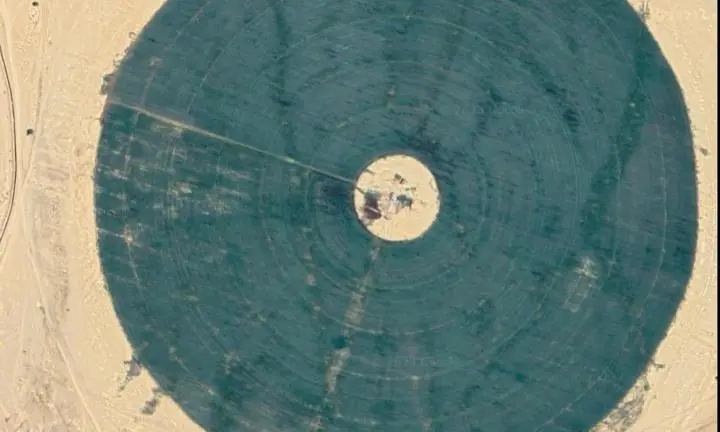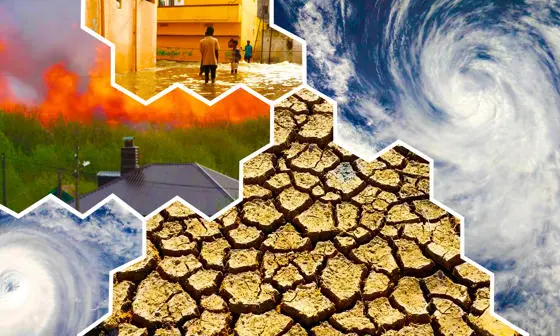Contested flows: the power and politics of water in Jordan
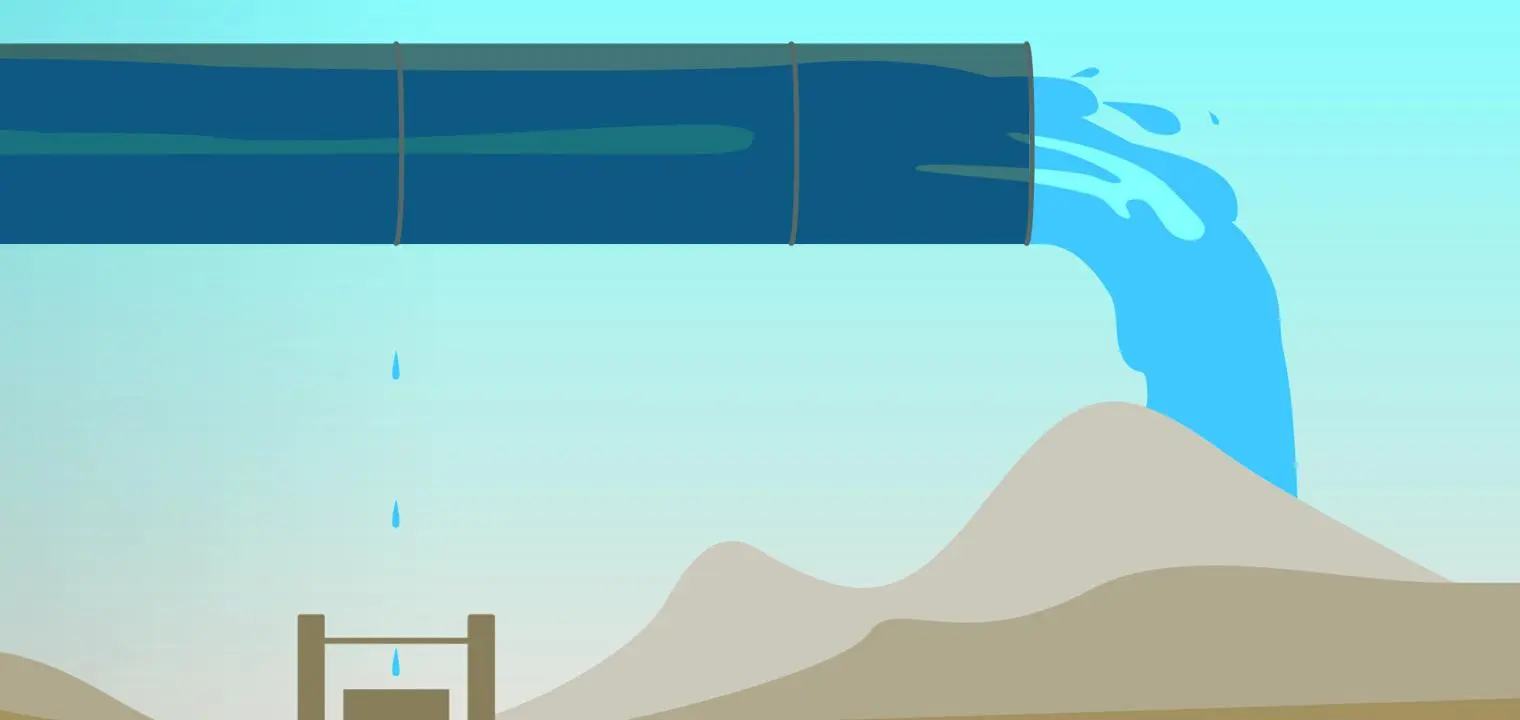
Contents
Jordan is increasingly defined by water scarcity: its status as one of the most water-poor nations on earth is repeated frequently in development documents and reports, and usually blamed on natural and external forces. Jordan undeniably does face a challenging water situation. Its total annual water budget per person, at 61 million cubic metres (mcm), is way below the UN’s water poverty line of 500mcm, and the majority of this comes from unsustainable overexploitation of groundwater, which will eventually run out.
Part of this clearly is down to geographical and environmental factors - Jordan is an arid country, with low rainfall, transboundary rivers and aquifers bitterly disputed by neighbours, increasingly feeling the effects of climate change. But this narrative is carefully shaped. It helps Jordan’s water sector tap into global flows of investment and development funding to work on mitigation, which normally takes the form of vast megaprojects. This constructed narrative erases the way water flows are shaped by social practices and by power, and how unevenly people experience the impacts of this scarcity.
My ethnographic research, with water users, officials and those whose lives are already being affected by water scarcity, challenges technical and apolitical understandings of the water system and the types of solutions that might be effective.
As part of this year’s LSE Festival exhibition "Displays of Power", I worked with the LSE Festival team to visualise Jordan’s water system, not as a technical system for the movement and management of a natural resource, but as a social and economic metabolism, in which many people and places are connected with each other at different scales by the contested flows of water. These flows carry both sustenance and energy, but also waste and pollution, and their movement hydrates some lives, and leaves others thirsty. The display aims to provide a visually graspable but critical glance at the Jordanian water system, looking at the social and political effects that emerge from these contested flows.
Where the emphasis is placed on the causes of scarcity has important consequences for the sorts of solutions that are favoured.
What is to blame for water scarcity?
Jordan’s government understandably tends to blame factors outside its control, including geographical and environmental factors and the influx of refugees. All the factors used in this narrative of insufficiency play a role, but they mask other considerations, such as the question of how water is managed and distributed, over which the government does have some agency. After all, water is not merely a "natural" resource - most modern humans rely on vast but often (to us) invisible infrastructures to provide us with the potable water we need to survive and flourish. These use huge amounts of energy to move water around, as well as needing huge exercises in political power to build, manage and maintain them.
International organisations, especially those who encourage Jordan to tighten its economic belt through structural adjustment, tend to focus on issues of management. The fact that 50 per cent of the total water supply is lost each year as "nonrevenue" water, leaking from the system through an unknown mix of physical leaks and deliberate theft and subversion, demonstrates how important management is. Yet for many of those who took part in this research, distribution seems the most pressing issue, given the huge inequalities that exist in the quantity, quality and cost of water people are able to access in different parts of Jordan.
Where the emphasis is placed on the causes of scarcity has important consequences for the sorts of solutions that are favoured. While some international funding (notably from USAID and the EU) has gone to infrastructural renewal and better management, the results have been limited, with high rates of leakage and theft continuing. Instead, the emphasis tends to be on the supply-side, and especially new huge megaprojects such as desalination, involving huge flows of foreign capital investment.
The Jordan river is one of the most disputed and militarised water ways in the world.
Where does the water come from?
Case study 1: Disi Conveyance Project wells, Mudawarda, Southern Jordan
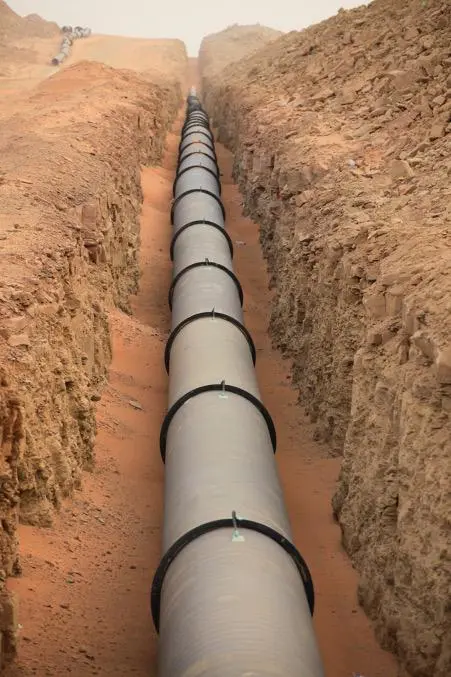
The largest single source of fresh water for Amman (Jordan's capital) are deep wells drawing on fossil aquifer water at Disi, in the far-south, near the desert of Wadi Rum. Jordan’s first and largest water megaproject, built through a public-private partnership (a 25-year build-operate-transfer contract with the Turkish-US GAMA energy consortium). Taking four years to construct, at a cost of $1.1bn, 55 wells have been sunk down to 700 metres to abstract groundwater. One hundred million cubic metres are extracted annually and pumped 325 kilometres to Amman, with smaller amounts sent south to the coastal city of Aqaba.
Is Disi’s water safe and sustainable?
Most urban residents reported an improvement to their water situation when the Disi project was completed, but serious doubts remain for some. To be made safe to drink, water must be blended with equal quantities of water from other, less radioactive sources. Researchers from Duke University in 2009 stated the water contained dangerously high levels of radioactive radium isotopes, at a level which planned dilution rates would not render safe for regular human consumption. The Ministry of Water and Irrigation strenuously deny the accuracy of this study.
Jordan’s official water strategy estimates depletion of these wells to be at least 30 years away, but others suggest that within a decade the water may be too saline to use.
Disi was supposed to improve supply to such a degree that small-scale urban water theft wouldn’t be so much of a problem, but the pipeline has been repeatedly and illegally tapped, with aid from major infrastructure companies, building vast, professional grade tunnels to divert thousands of cubic metres of water. Landowners use this stolen water for irrigation, and sell it illegally to private water tanker companies.
Case study 2: Jordan Valley
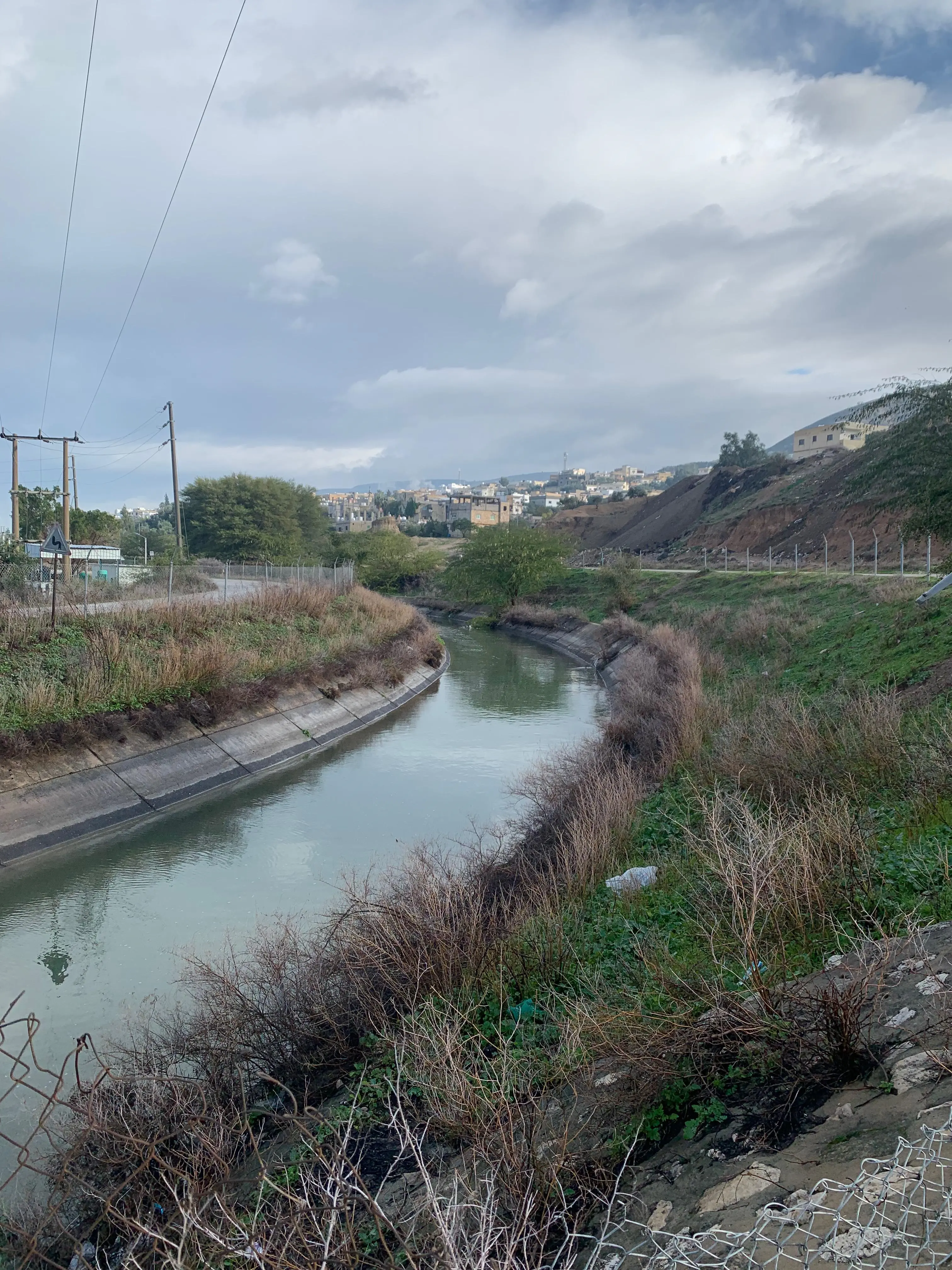
Jordan’s main surface water resource is the Jordan valley, locally called the Ghor, a depression 500 metres below sea-level, with its own humid microclimate, and where Jordan’s most intensive high-value agriculture is concentrated. Water from the river Jordan (via Lake Tiberias), and its tributary the Yarmouk, flows into Jordan via the King Abdullah Canal.
To provide water to the cities (and further dilute the radioactive water from Disi), 110 million cubic metres is pumped uphill to the highlands. The remainder (just under half) is used locally for agriculture, moved through irrigation ditches and pipes maintained and managed by local Water User Associations.
The Jordan river is one of the most disputed and militarised water ways in the world, with ongoing water disputes with neighbouring Syria and Israel. After the 1994 peace talks, Israel takes a fixed allocation of water from the Jordan River, rather than a relative share, and its control over water in the area is shown by Jordan’s purchase of 10 million cubic metres of additional water from Israel each year. Plans were mooted to swap solar energy from Jordan’s deserts for Israeli water in a "blue-green" deal, but the Israel-Hamas war, which has galvanised Jordanian public opinion against further economic cooperation with Israel, has made such plans politically impossible.
How do people access water? What are the impacts of water scarcity?
Water User Associations, made up of committees elected by local landowners, control the allocation and movement of irrigation water through ditches and pipes. These have become bitterly contested centres for exerting local patronage networks, with influential landowners seeking to subvert them to their own ends.
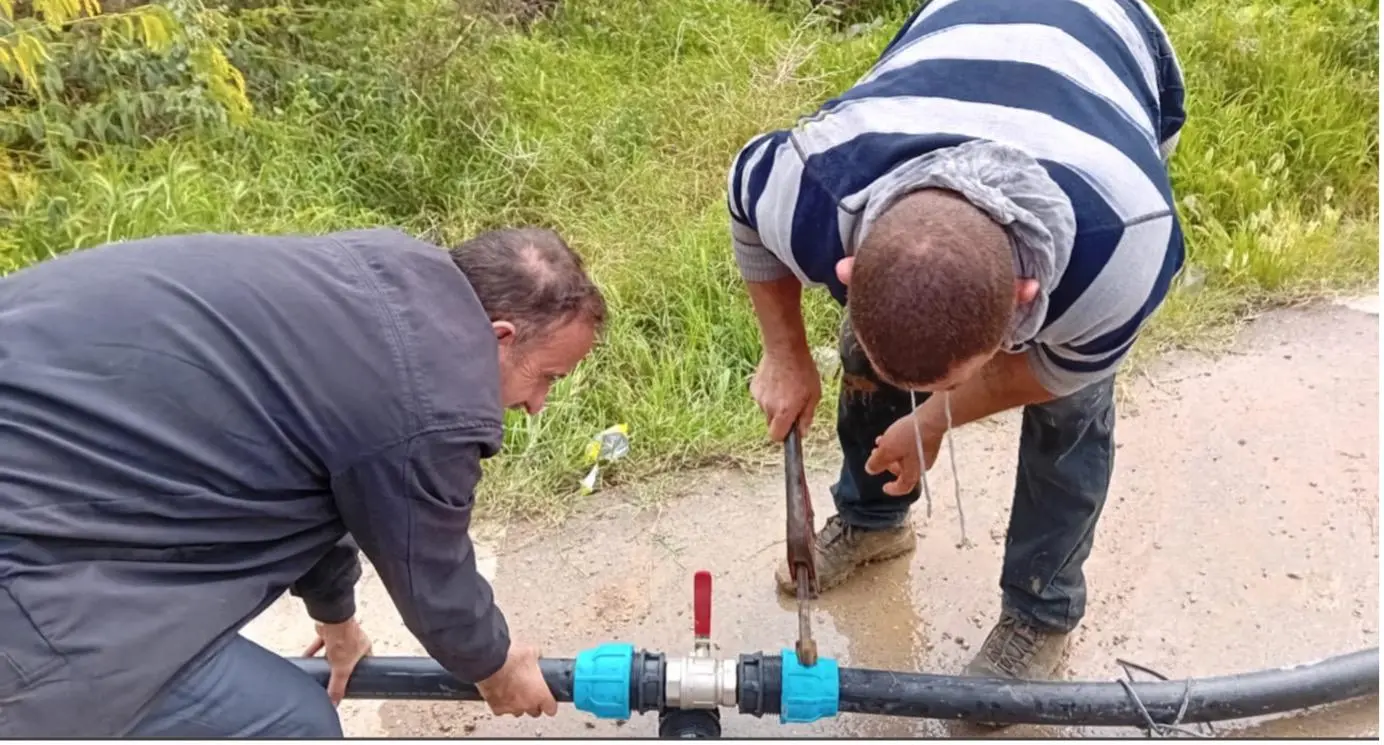
A local citrus farmer told me to look along any irrigation line in the valley leading off from the canal valley during a summer dry spell, and find the greenest farm – that, he said, will be owned by the family of the association’s chair. Allocation is supposed to be based on a set of calculations; the average water required for their crops per area under cultivation. Local farmers report, however, that they generally receive only around 60 per cent of this calculated amount. Meanwhile, attempts to introduce new, more water-resistant crops by development agencies and consultancies have proved unpopular and economically inefficient - farmers grow crops with existing markets, and investments in established fruit trees, which dominate parts of the valley, cannot easily be written off and replaced.
In such circumstances, the Jordan Valley Authority is constantly battling against water theft and pipeline tapping, often undertaken in desperation by farmers facing damage to their crops. The canal bank is littered with unsanctioned pipes and hoses dangling into the water.
Case study 3: Amman and Miyahuna municipal water company
As the water from Disi and from the Ghor reach the country’s rapidly expanding capital city they are mixed in huge storage reservoirs with water from local aquifers and dammed rivers, such as the River Wala, in part to lower radioactivity. Here, the water is transferred to Miyahuna ("our water"), a state-owned municipal water company that covers the capital and the central part of the country.
Each household with a connection (which not everyone can afford) gets a weekly timed slot of piped water, and for the rest of the week people rely on storage tanks. The cost to connect to water system is 500JOD - more than the average monthly salary .
Despite frequent projects with international development funding, and an impressive array of metres, gauges and statistical tools, estimates suggest between 40—50 per cent of the water in Miyahuna’s system goes missing before it reaches a bill-paying customer - becoming so-called "non-revenue water".
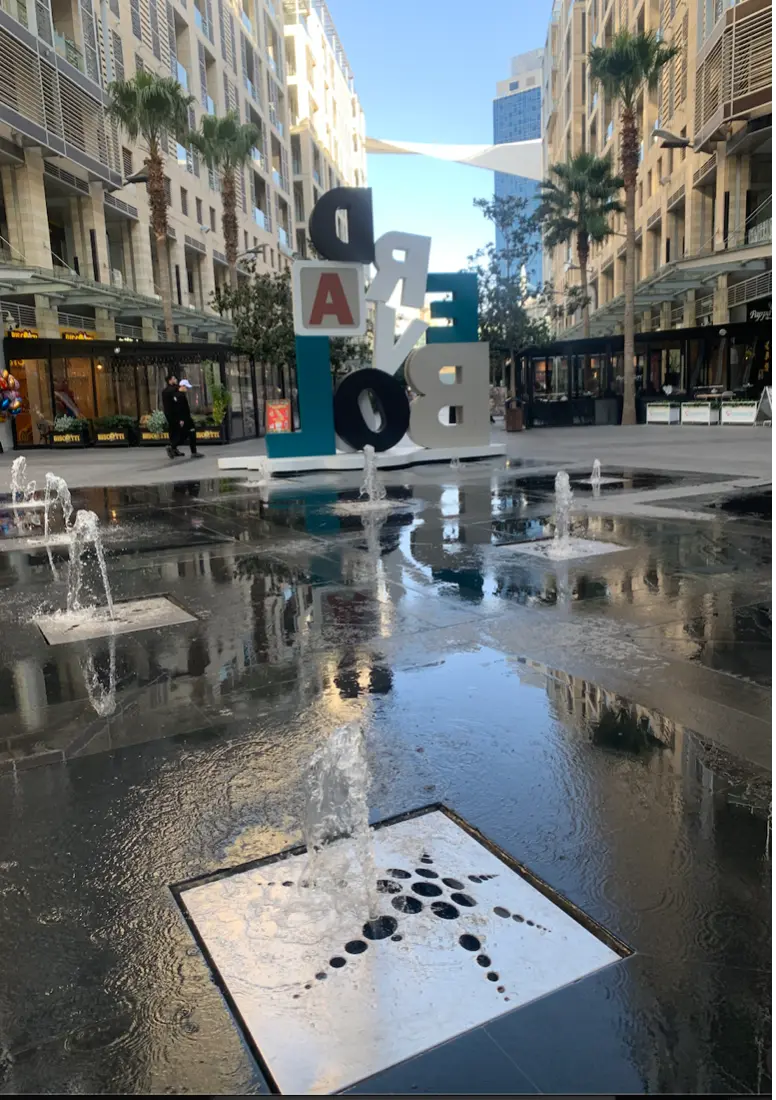
Richer households have large private storage facilities, and the ability to buy in more water by tanker if they need it, allowing some to keep lavish lawns and gardens green, swimming pools topped up, and to wash their cars and driveways weekly.
For poorer households, the day the water comes is the day when (mostly) women try to do all the water-intensive tasks involved in caring for the household - laundry, cleaning, mopping floors and washing children. If the roof tanks run out, or if the mains supply doesn’t come through (which happens frequently during summer droughts), these households are forced to buy expensive water from private tankers.
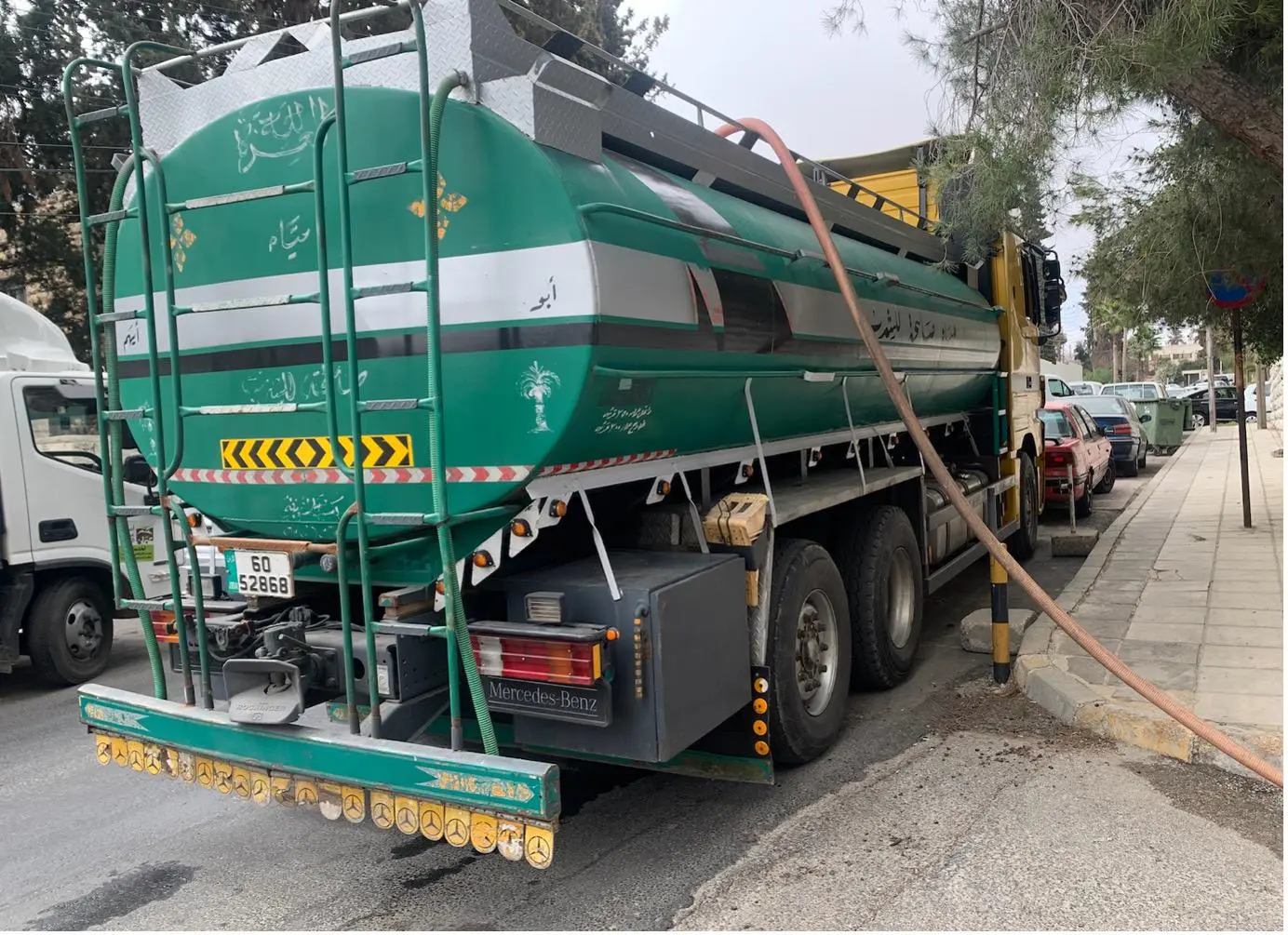
Private water tankers are an essential part of the system. These are in general small businesses, owned by the driver, which should fill from registered wells with licences, paying a tariff set by the Water Ministry and documenting their water source in official paperwork. In practice, however, many people are aware of tankers who bypass procedures to save money. Calculations based on wastewater produced in the city show that more water is being used than is entering the system through legal means.
Case study 4: Wala River, Dhiban
The small town and surrounding rural district of Dhiban, an hour’s drive south of the capital, is also supplied domestic water by Miyahuna, with a mains system built in the 1980s. Here, though, the water flows into people’s homes for only six hours per week.
More crucially, for a place where most people were until recently employed in agriculture or semi-nomadic pastoralism, it has been one of the areas worst hit by a lack of water for irrigation. The Wala River and its wider basin used to feed additional local shallow groundwater wells and springs, but the water table has been dropping year on year since the 1980s, as well as getting saltier. The Wala River was dammed in 2006, with promises made that its water would be used to support local agricultural developments, but the dam water is mainly used now for domestic supply.
Being a water scarce region with high unemployment and collapsing agriculture, but also a net "donor" region in water terms, water is one particularly material instantiation of wider political economic exclusion, and is therefore being taken up in protest movements, which link their fight for local sovereignty and fairer distribution to the wider global rhetoric of environmental justice.
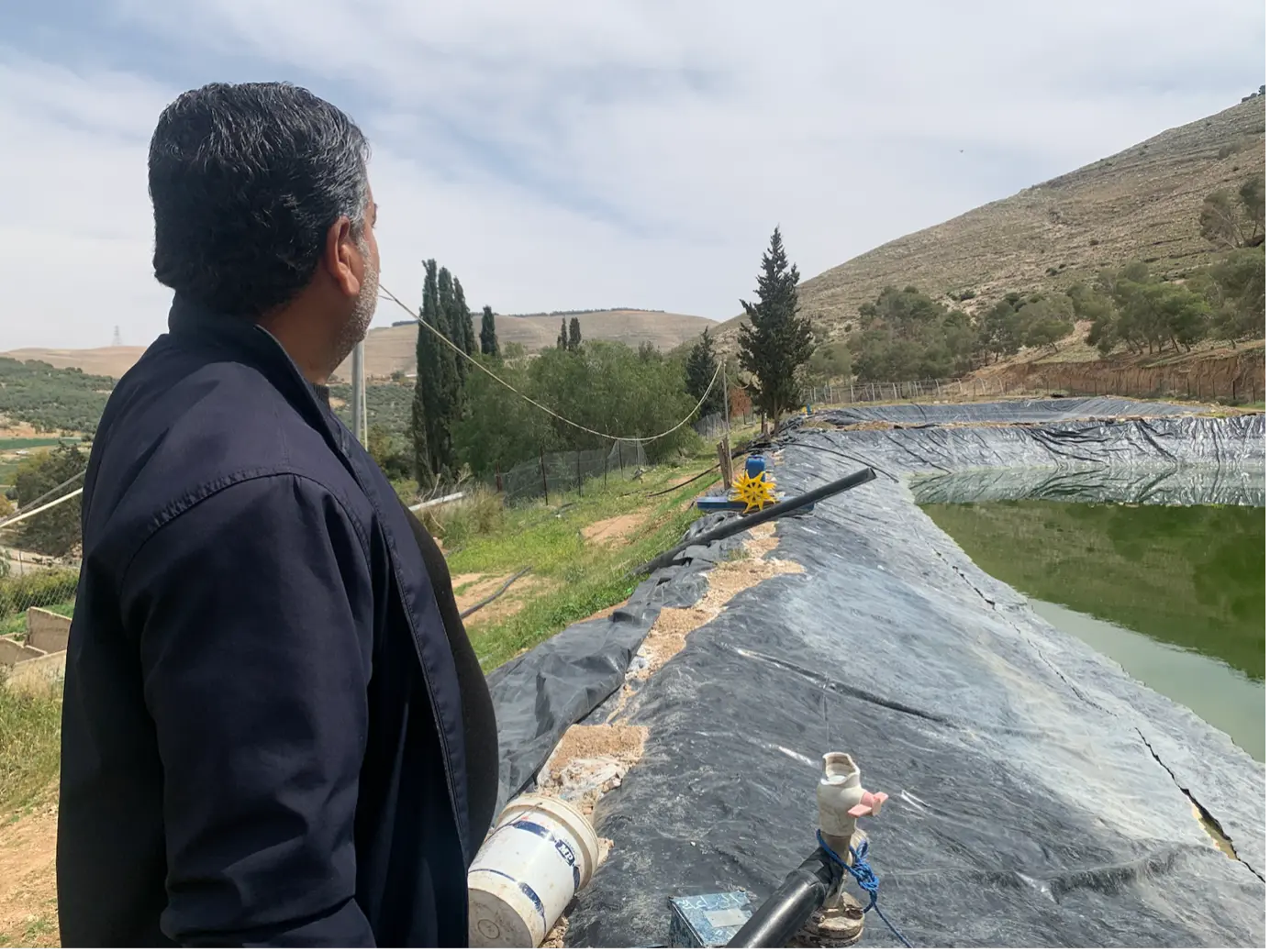
The government land in the district along the Wala has been turned into an employment-creating agricultural station. However, its manager, Mohammad Al-Snayd, a former protest leader and farmer, who has spent much of the last decade as a political prisoner, has used his role to criticise the government over its handling of water. He says of the government water distribution "they are bleeding us".
As the local agricultural and natural environment degrades, water scarcity has become a new cause taken up by longstanding local protest movements. Mohammad Al-Snayd has led campaigns on illegal levels of water pollution in the dam water, which he uses as a visible example of more pervasive corruption. He says the pollution is entering from an upriver wastewater treatment plant, which periodically and illegally dumps wastewater untreated. In one viral social media post he complained "the poor drink Pepsi, while the rich get Seven up" showing a picture of the colour of the local water.
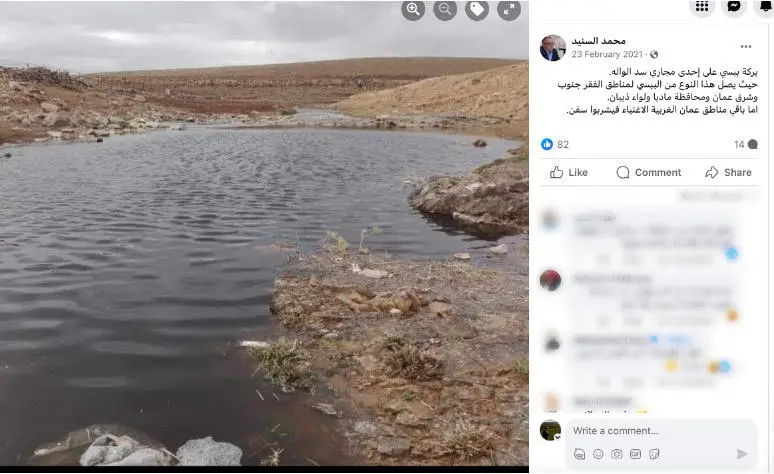
Case study 5: Jabal Bani Hamida
Near Dhiban, in the mountains along the side of the Dead Sea, lies the region of Jabal Bani Hamida, whose inhabitants are former semi-nomadic Bedouin. Here, piped water from Miyahuna only arrives for around 1.5 hours a week, often coming in the middle of the night and at pressures too low to fill roof tanks. Instead, women stay up to fill buckets and jugs for the week ahead.
Shallow groundwater stone wells, many over a thousand years old, are now dry for most of the summer, and increasingly saline. Many locals expected the connection to central infrastructure in the 1990s would ensure an improved quality of life, part of the moral contract by which the state had offered support and development to help settle Bedouin. At this time, local water resources were not part of any wider infrastructure but were locally managed and generally plentiful. Now villagers must pay Miyahuna for their supply, which they find to be inadequate. Their bills, which are similar to those paid in Amman for a better service, also include fees for wastewater, despite there being no wastewater infrastructure here, and people thus rely on their own septic tanks. This is seen as an injustice, especially as their needs for water to sustain agriculture are greater.
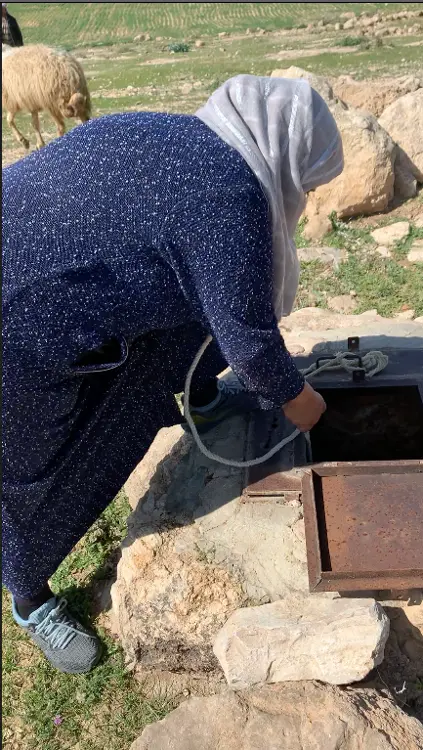
The water situation here is one of the worst in Jordan, and though locals are less vocal in their protests than down the road in Dhiban, there is also great discontent. Local employment and agriculture can’t support families here anymore, so increasingly only pensioners and the very poorest remain, with young people moving away to towns and cities. Especially during droughts, locals face the agonising choice between losing their plants and animals, or paying exorbitant fees to private water tanker companies, many of whom get their water from deep illegal groundwater wells. One old woman summed up her situation as "next to the well, and you die of thirst".
Where is the water going?
Case study 6: Azraq and the eastern desert
In the highlands east of the Jordan river, only a narrow band of land has historically been suitable for rain-fed agriculture. In the centre of Jordan, much of this strip has been built over by expanding urban sprawl. Agriculture, and increasingly construction, has been pushed eastwards into the arid steppe of the Bādia, the Syrian Desert.
This eastward expansion of settlement has required ever more groundwater wells. These have caused the water table to sink at a rate of 20 metres a year in places, and in the eastern desert, the Azraq wetland and oasis have largely disappeared. For the last 50 years the government has sought to carefully control well-building. While official wells are licenced for use by certain industries, and some landowners have legacy licences from before the current restrictions, many thousands of illegal wells have also been built in the eastern highlands.
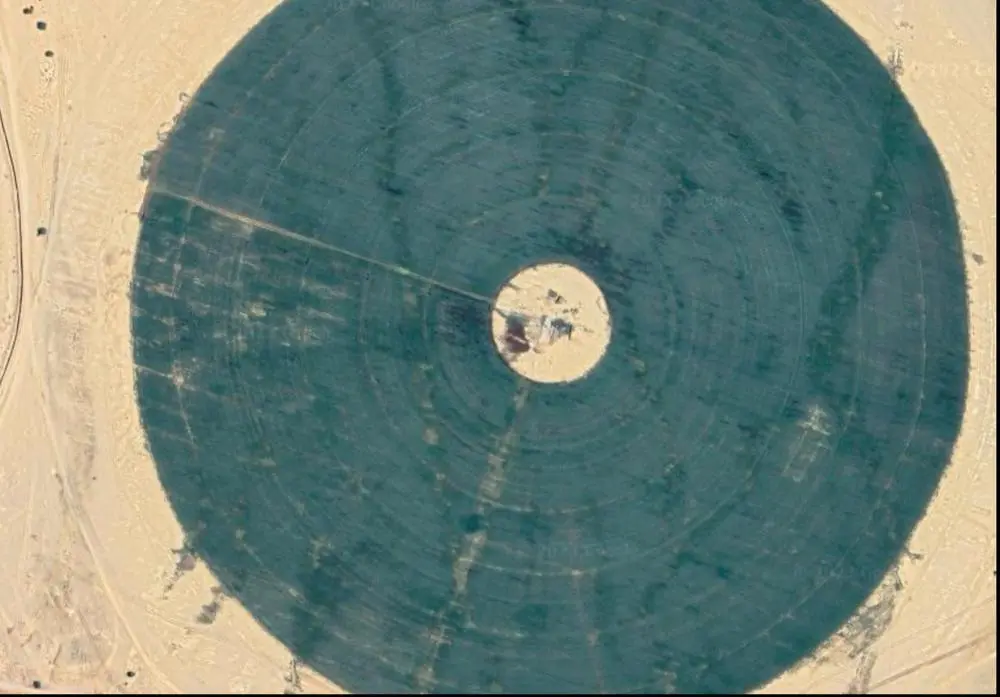
Water researchers point to satellite imaging to show that there is far more land used for cultivated irrigation than can be accounted for through official legal water sources. Yet these wells, and the cultivation they enable, provide rural employment in areas with few alternative sources of income, and where unrest among tribal allies of the royal house would be especially difficult to contain. Attempts to backfill, or even just put metres on, wells have often been met with threats of violence from local tribal leaders.
The agricultural sector makes up 4 per cent of GDP but 30 per cent of jobs
Throughout the highlands, especially in the Eastern desert around Azraq, landowners pay tens of thousands of dinars to sink their own wells, irrigating cash-crops, solidifying land claims and sometimes selling water illegally to tankers, where it enters a shadow water economy. Costing in excess of 50,000 JOD (57,000 GBP), these are serious undertakings, requiring drill rigs and geological expertise. They are therefore mostly built by wealthy landowners, often possessing powerful connections in the government which shield them from prosecution.
Even when legal licences are not granted, government amnesties have been granted, by which wells are not licenced but are metered. These wells feed central pivot irrigation circles for vegetables, as well as some enclosed orchards growing water-intensive fruit trees, such as citrus and banana, in the desert. Illegal wells, which don’t have to pay the Ministry of Water or limit their extraction, can often be well disguised under animal shelters or even just appear as a length of pipe emerging from between two concrete blocks.
Exhibiting in the LSE Festival 2024
The supply of water is an extremely complex issue for Jordan’s authorities to manage. My display as part of LSE Festival 2024 aims to allow the reader to grasp something of the power and politics of Jordan’s water system, and to recognise the degree to which it is also a social and political artefact as well as a natural and technological one – a hydrosocial metabolism.
This is true for all water systems, and has salience for the way we think about water crises in the UK. Yet it takes on particular importance in Jordan and the Middle East, where water systems are under environmental and political-economic stress, beset by unsustainable extraction, the weaponisation of water supplies, increased transboundary conflicts, and dire future predictions of drought, famine, desertification and climate migration. Given the scale of global climate breakdown and environmental destruction, much of this may be in store for other regions too.
Water issues are increasingly central to a lot of development initiatives, especially given the UN’s framing of access to water as a human right enshrined in UN Sustainable Development Goal 6, but the prevailing logic still treats water supply as primarily an engineering problem with a naturally limited supply. Frameworks that depoliticise and de-socialise water risk not only perpetuating structurally unfair political economies, they often fail to gain much traction with reality, too.
Water may seem a measurable and quantifiable substance, but in fact even water officials acknowledge large uncertainties about the accuracy of the figures they use in their work. By following the water through its infrastructure from its main sources to its main users, via some of its discontents, I hope my research exposes some of the uncertainties in the way it is framed, quantified and made manageable.
2024 is a year of elections. What happens when the world goes to the polls?
- Read more articles from this global politics special edition of the LSE Research for the World online magazine.
- Explore our dedicated hub showcasing LSE research and social science commentary on key debates and emerging themes in global politics.
- Join us for the LSE Festival: Power and Politics, a week of events from 10 to 15 June 2024.
